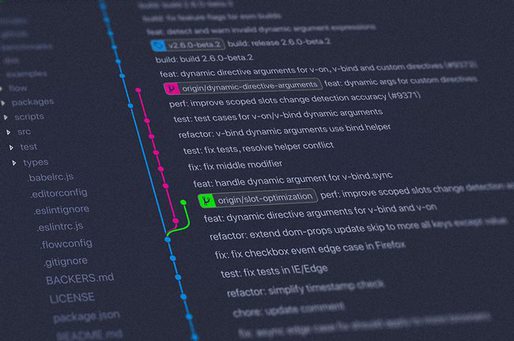A machine in the case of machine learning is a computer that learns from the data provided to it to achieve certain tasks. The computer here is not explicitly programmed to do such tasks rather they complete these tasks by remembering feedback from the given data.
- Approaches
Majorly, there are three types of approaches for machine learning, supervised, unsupervised, and reinforcement machine learning. For a supervised learning model, it is quite similar to when we are learning a task under the supervision of a supervisor who is validating our right and wrong answers. On the same principle, the running algorithm learns from labeled data information, providing feedback to that algorithm, which is used to evaluate its accuracy on the training data. Contrary to the above, in an unsupervised learning model, it provides unlabeled data for which the algorithm tries to make sense by sorting features and patterns independently. Here the model is handed over information or a dataset without being told what to do about it. Lastly, in reinforcement learning, a computer algorithm interacts with a dynamic setup to perform a certain goal. As it navigates its problem space, the program provides feedback analogous to various rewards, which it tries to maximize. For example, driving an autonomous vehicle or self-driven car can sense its environment and move safely with little or no human intervention. Moving ahead in this blog on What is Machine Learning, let us learn a few ML applications.
- Applications
There are numerous uses of machine learning; the following are the most popular use cases.
- Product recommendations
- Online fraud detection
- Handwriting recognition
- Speech identification
- Traffic intensity prediction
- Image recognition
- DNA Sequence classification
- Natural language understanding
- User behavior analytics
- Life Cycle
Broadly machine learning life cycle involves seven steps, which are listed as follows;
- Gathering Data
- Data Preparation
- Data Wrangling
- Analyse Data
- Train the model
- Test the model
- Deployment
Gathering Data – This is the first step of the machine learning life cycle, which involves the collection of the data for the problem at hand via multiple means. It compromises identifying different data ṣsources, collecting data from these sources, and then further integrating the data together to transform that into a dataset.
Data Preparation – It is about preparing the data for the next step. Collected data is aligned randomly, which is then explored, and the process is called data exploration or exploratory data analysis (EDA). It helps to find out about the nature of the data, its characteristics, and knowledge about the data format. We do an in-depth study of data by using univariate and multivariate analysis, which includes finding correlations, outliers and studying various visualization plots or relationships between different variables.
Data Wrangling – It is not mandatory that the collected data is ready to use as the real-world data mostly contain missing values, outliers, noise, duplicate, and invalid information. The process of converting this raw data into usable data is referred to as data wrangling. It can be done by cleaning data, filtering required variables, outliers’ treatment, and data transformation.
Analyze data – The data prepared in the above step is then used for the analysis stage which consists of the below-mentioned steps;
- Selection of analytical techniques
- Building the required models
- Review the output of the build models
In this, we take the prepared data and use the machine learning algorithms to build various models. Based on the type of problem statement, we select the machine learning technique like Classification, Regression, Analysis, and Association. Further evaluation is done for the built models.
Train the Model – In this step, we train our model to give an improved performance to get better output for the problem statement. Model training helps the model to understand various features and patterns in the data.
Test the Model – Once the machine learning model has been trained on the given dataset, we test the model. In this step, we check for the accuracy of the model by providing a test dataset to it.The testing model determines the percentage accuracy of the model as per the requirement of the project or problem statement.
Deployment – In the last step of deployment, we deploy the model in the production if it was giving desired performance and accuracy. Also, we need to regularly check the model’s performance which involves periodically generating a report for showing performance track.
- Languages for Machine Learning
Many programming languages are enlisted as R, C++, JavaScript, Java, C#, Julia, Shell, TypeScript, and Scala, which are available for Machine Learning Applications. However, Python is still one of the best languages for Machine Learning applications because of its numerous benefits. Python is quite a user-friendly language because of its readability and has lower complexity than other programming languages. Python has many prebuilt libraries in it, to name a few such as Numpy, Pandas, Scikit, Librosa, OpenCV, Matplotlib, Seaborn, Scikit, TensorFlow, Pytorch, Django. These are different types of packages and libraries which help to meet different functionalities.
Moreover, complex concepts like calculus, statistics, and linear algebra are easily handled by Python in minimum time implementation. In short, Python is a versatile programming language and supports most of the platforms, including Windows, macOS, Linux, Unix, and others. While migrating from one platform to another, the Python code requires minor changes for the new platform.
This brings us to the end of the blog on what is machine learning. We hope you have gained a basic understanding of what is machine learning and are better equipped to power ahead of your career.
Hope this article helps you a lot in understanding this topic. If you’re interested in free online courses with certificates, So enroll today on Great Learning Programme.


